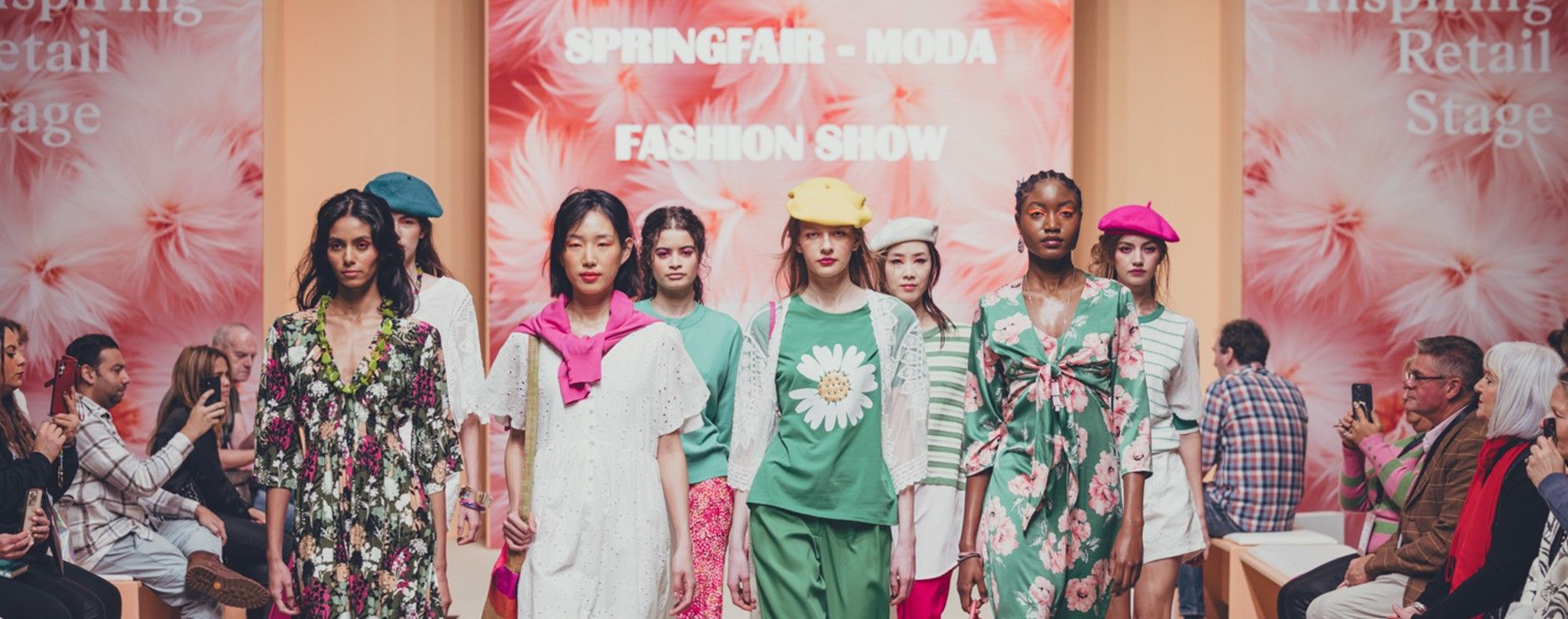Exploring macro-trends and future proofing your business
)
Expert futurist, Geraldine Wharry explores the key macro trends that will impact the industry and forecasts for the future. What is the future of forecasting given the unprecedented global impact of Covid-19? Take a look at some of the key macro trends that will help you to shape your business strategy in the post-Covid era.
REDEFINING INNOVATION
It’s important to ask ourselves “what does innovation mean”, and to understand what it is we want to adopt as we are forced into accelerated change due to the pandemic. This trend is about realising that today innovation is not just technological, it’s also philosophical. We are going through a shift in mindset and in cultural paradigms and this shift is forcing us to focus on social justice, wellness, frugality, community and co-creation. Underpinning this is also an urgency to care for our planet.Being innovative is not about adopting the latest technology, but about adapting to and adopting a behavioural shift that privileges a merging of tech and craft. Today is a challenging time, but it’s also an exciting time because we’re now able to shape the playbook for what’s next in terms of our industry and our culture; we are ushering in a period of collaboration and new systems in design, manufacturing, business and lifestyle.
Covid-19 is a chance to do capitalism differently. We are moving towards an idea of stakeholder capitalism which is being driven by changing consumer expectations that want brands to be pressing on global issues. This is forcing a reprioritisation of business’ priorities; to remain relevant and prosperous in the long term, brands are increasingly choosing to shift their business strategies from maximising shareholder value to strategic commitment that delivers profits for both shareholders and for wider communities.
Fashion has become a social act, and it’s about putting the “we” over personal gains. Our need to make clothing, survive and prepare for the future cannot be at the cost of underprivileged communities. We’re now learning to unlearn and to tap into new communities and new talent. The role of fashion brands is changing; we have to view ourselves as beacons of support for our communities, redefine how we approach design and manufacture and also rethink who we want to partner with.
This crisis has taught us that we are social animals and social media, in particular, has given us the opportunity to connect, to create and to learn. One of the things we have seen come out of the pandemic is the democratisation of premium content, which has meant that we’ve had an unprecedented amount of conversations where many members of the industry, particular those focused on sustainability, saw an opportunity to reboot. Previously closed doors and events are now accessible to people all over the world, which has sped up the globalisation of knowledge and access to talent.
We’re now in an era of giving each other support, which is bringing about alternative distribution models and solidifying a sense of digital tribalism. We’re realising the strength or our human minds, with great connection, is stronger than our physical presence. In addition to this, we’re moving to a rawer and more honest “de-curated” way of connecting with others from our homes. Global communities that have very niche and personalised interests will come to the fore and these will form a big part of the solution to a polarised and unstable global structure.
One of the most interesting aspects of what is happening in terms of this redefinition of innovation in a more community-driven way, is that we are starting to decentralise our assets and resources. This has been really accelerated by the pandemic as we have seen the fragility of our current shopping and export processes. New solutions, such as digital fashion and fab labs, are pointing us in the direction of “frugal innovation” which has already been in practice in places like India and Africa; this is about innovating with our limited resources, be they financial, material or institutional. This is disrupting our Western idea of new business models as we reconfigure value chains, redesign products and look at extreme affordability restraints.
THE BIO ECONOMY
All fashion essentially comes from nature; its resources and our labour are mediated by social, culture and political relationships, but ultimately everything we have comes from the natural world. The Bio Economy looks at bacteria, natural materials and unconventional materials, such as algae, as part of the next economy. This goes hand-in-hand with the rise of the wellbeing economy, which puts wellness at the forefront of all of its systems.As we evaluate our modes of production and consumption and face the reductive systems we have been using, we’re really redefining what “true efficiency” means. True efficiency is about combining the intelligence of nature with the benefits of technology. For this, the idea of biomimicry is really useful, by examining how we can use nature as our mentor and harness its time-tested systems.
What we’re looking at is a bid to merge pioneering tools and solutions to transform our material world by unlocking the power of nature and technology. By thinking more as a community with a learning mindset, we are making access to these technologies more approachable, but we need first to rethink the language of materials in order to enable us to work with them in a sustainable way; it’s about moving from consuming nature to augmenting nature.
This is the opportunity to transition out of polluting types of materials, that are bad for both our health and for the planet, to materials that have wellness properties and/ or harness the power of nature. The new material language will help to protect us as well to help us with the challenges posed by climate change and potentially hostile environments.
Part of this growth of smart textiles is the development of virucide materials. This signals to a new generation of products and services designed for protection and survival. Touch is an incredibly important sensation and is the most emotional sensitive feeling, so we need to transition back into touch and think of how we can have a future where we are not scared to touch surfaces.
This all points to a fashion industry that is part of a larger system of wellbeing. As the industry continues to grow its investment in tech and AI, algorithms will be powered by increasingly intimate biodata; we will have clothing that can read our biometrics.
As we start to process this kind of data, we will move towards a more personalised wellbeing space that fashion will need to be a part of. This will have to contend with our future spaces; as we migrate primarily to online shopping, the retail spaces of tomorrow will have to have a real premium. The trend in urbanisation is to create long-term green havens, and the anti-pollution movement is growing very fast. We’re also seeing a huge growth in wellness real estate, so post-Covid, we’re finding refuge in retail spaces that prioritise wellbeing.
CRAFT FUTURES
The previous two trends signal to a blended future for fashion where craft and purpose are the most important factors. For this, we will need to look at decentralised manufacturing systems in order to be more agile.In the future, we are looking at reconstructing fashion, literally. We are looking at reuse, repair, upcycling, renting and resale. But we are also reconstructing the culture of fashion with the rise of biotech and digital technology.
Focusing on biotechnology in future collections will be so important for brands, because although they are not yet nascent, they are poised to change the way we approach material and make clothing. Additionally, they are likely to have long-term impacts, not just on fashion but also on the agriculture industry. From both a resources perspective and an ethical perspective, we will need to look at redefining fabrics not just in terms in clothing but also for food and for structure. Although this is still an emerging practice, it is one that really stands to revolutionise fashion.
This is expanding our idea of what is “natural” and what is “acceptable”. Today we find ourselves at a crossroads where virtual humans and avatars are not only populating our social media feeds, but are also becoming us in the representation of collections. This points to a completely revolutionised showcase of fashion in terms of fashion shows and events where we can embed zero waste more and there is less carbon emissions created by these events. There is an interesting link between biotech materials and virtual tools where we can redefine the way we wear clothing.
If we are producing less clothing or becoming more family with digital fashion and avatars, clothing in the future and the culture of fashion will be heading towards content. We will be consuming clothing as digital content, and this will change the value exchange of fashion. We are creating a new blueprint and an extremely immersive playbook for fashion where we can live on as avatars and exchange together. This will prove that there are unexpected consequences of how this will transcend the way we relate to each other as humans and the way we relate to introduce physically, especially with the introduction of haptic technology.
This is not a binary conversation, but rather how technology and nature come together. Technology is beneficial if it is harnessed correctly because it provides full traceability. We can also harness the power of hackers and their subcultures to help us to understand this brand-new world. Looking in this direction, Gen Z believe that by 2030 communication skills and coding will be important assets in the workplace, whilst creativity will be the most necessary tool to succeed. We will need to open up our perceptions to include the belief that creativity may come from avatars or AI in the future.
Hear Geraldine explain these trends in more depth, as well as share her top tips on future proofing your business on demand.
If you liked this article you might also like:






